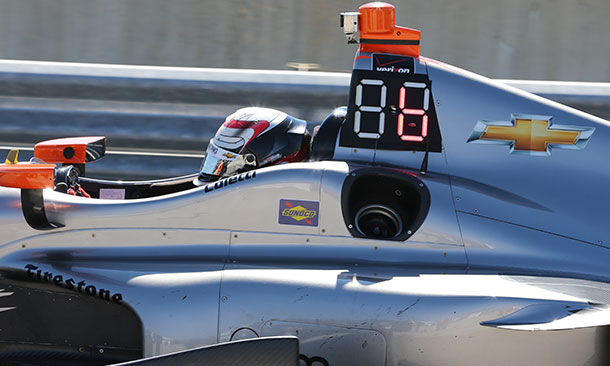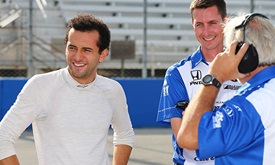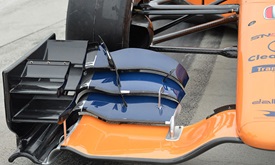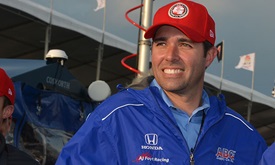Real-time running order display engages fans
MAR 16, 2015
BIRMINGHAM, Ala. – If Verizon IndyCar Series rookie Gabby Chaves overtakes three cars on a lap during the Angie’s List Grand Prix of Indianapolis, spectators and TV viewers will see each position gained and lost throughout the field.
INDYCAR this week is validating new technology that will track each car’s position on the racetrack and display it in real time via a light emitting diode panel on each side of the chassis.
The May 9 race on the Indianapolis Motor Speedway road course is targeted for implementation of the track positioning system and display of when a driver triggers the push-to-pass feature.
“This project started over a year ago in concept and it really is about how we can get fans more engaged, allow them to see more of what’s going on,” INDYCAR president of competition and operations Derrick Walker said. “If you’re not in line of sight of a video screen or a scoring pylon, it’s hard to know who’s doing what. It was a natural to do the numbering system.”
The 8-inch-wide by 7-inch-tall LED panels, which are only 3 millimeters thick, will be attached to either side of the airbox (below the cockpit camera mount) on each entry.
Running order will be updated as the car crosses each of the multiple INDYCAR Timing & Scoring timelines around a racetrack. Track position in other motorsports series that employ a similar system is updated only at the start/finish line.
“The LED displays are driven from a controller that is hooked into the car network,” INDYCAR director of Timing & Scoring Jon Koskey said. “The controller can talk to the car ECU and pick up information live so as a timeline is hit that information is put on the car network immediately. You’ll see how many positions each car gained or lost live on any given lap.”
Red is the primary color and green will be used for the push-to-pass, which will be displayed as a pattern. Brightness of the LEDs will be modulated according to the setting.
“We had to take into consideration the brightness of the lights because this new LED technology is extremely bright,” Koskey said. “At night you don’t have to run it full intensity. We can make modifications to the light panels in real time through the timelines by sending control codes. There are four levels of brightness, so we put into the system what we want.
“When the cars come into pit lane that display is going to be right in the fuel filler’s face so using the car data we programmed in that when the car drops below 10 mph it will dim to 25 percent.
“We’re putting functionality into play. We have room down the road to do others things with it.”
Adding a third color for another function to be displayed is an option.
“There are other things we can do with it as we look down the road,” Walker said. “We’ll start off small and get the fans engaged and understanding what it is doing. It’s all about the fan experience.”



















